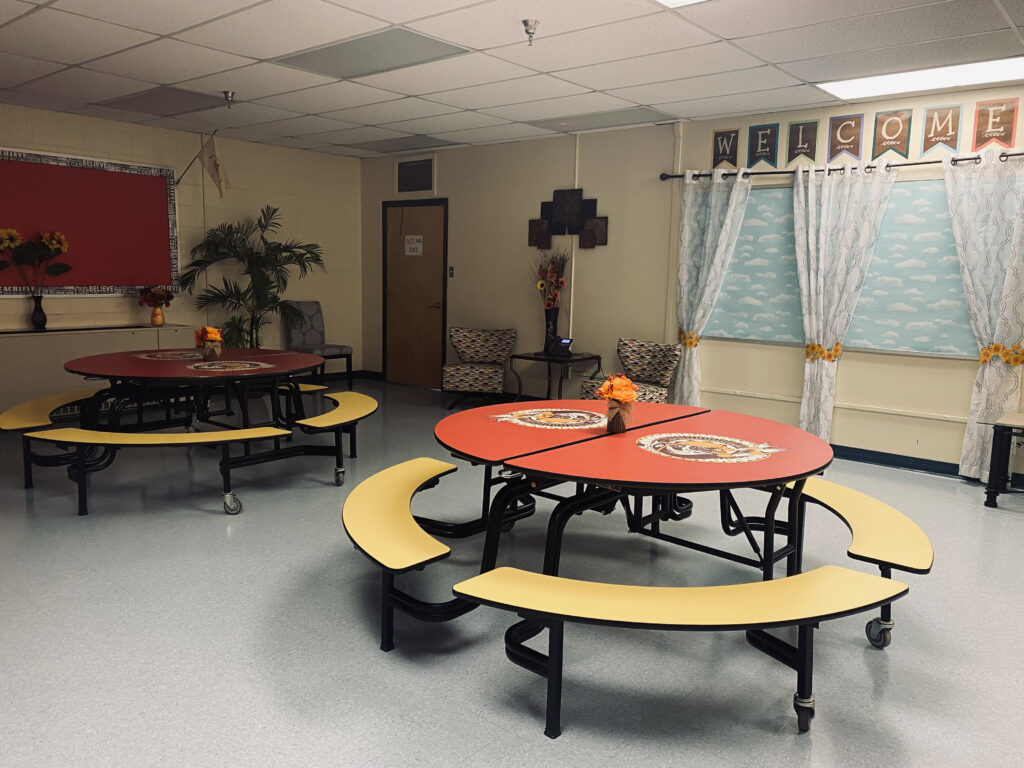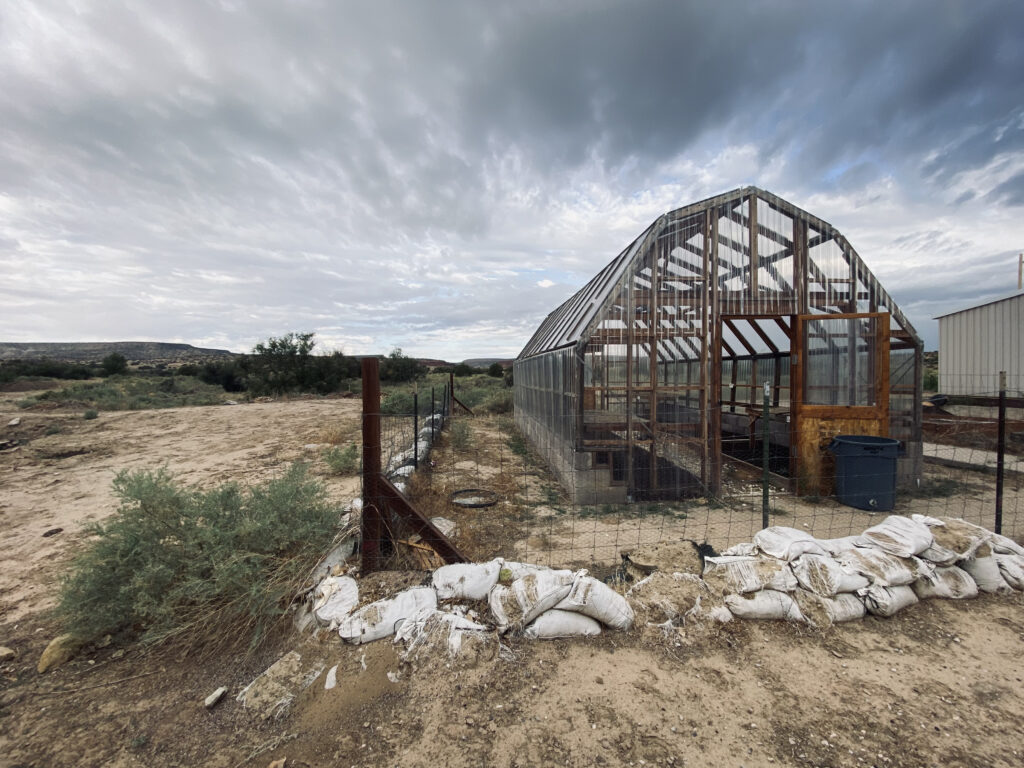facts about the To’Hajiilee Community School:
- Grades Served: Kindergarten – twelfth. The school also has a Family and Child Education (FACE) Program that serves children from birth through age four with early childhood education and school readiness programs.
- Facility Description: Constructed in the 1960s, the school comprises several buildings and a gym.
- Education: Curriculum parallels the New Mexico state education standards. In addition to core academic subjects, the Navajo language, history, and culture are taught.
- Nutrition: A nutritious breakfast and lunch are served each day. One-hundred percent of students enrolled here qualify for the Federal Free Meal program.
- Transportation: Children are bused to and from their respective homes each day.
- Extracurricular Activities: Students participate in outdoor sports, games, powwows, yearly Navajo dances, student council, afterschool tutoring, enrichment programs, and yearly traditional Navajo events.
The To’Hajiilee (pronounced “toe-HA-ji-lee”) Community School is located in northern New Mexico in the area around To’Hajiilee. This school is typical of those that serve Navajo children and is funded by the Bureau of Indian Affairs, save in one respect — it is far removed from the vast Navajo reservation that spills from Arizona into New Mexico and Utah. Though not a part of the Reservation, this area is still “Navajo Country,” where a few sheep graze against a landscape of barren desert relieved by occasional flat-topped mesas. Despite the wealth of natural beauty and rich cultural heritage, the Navajos who live in this area are desperately poor. There is virtually no employment. Broken homes, alcoholism, drug abuse and inadequate food are constant manifestations of poverty.
For this reason, the To’hajiilee Community School serves as a beacon of hope. Here, each child receives nutritious meals, encouragement, and a quality education — the key to breaking the cycle of poverty so that students may rise above the difficult economic circumstances from which they come.
Facts about the navajo nation:
- Population: 173,637
- Median Household Income: $20,858
- Unemployment Rate: 48%
- Poverty Rate: 35.8%
READ MORE STORIES FROM OUR sites in the navajo nation:
The Great Risk to the Navajo Nation



